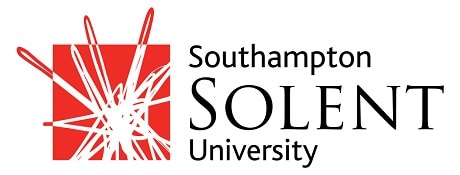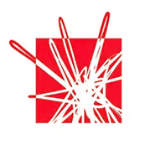Southampton Solent University
Read about Southampton Solent University’s solution and experience.

Read about Southampton Solent University’s solution and experience.
Southampton Solent University wanted to improve the management and processing of their supplier invoices. Their previous manual system was viewed as slow and inefficient, and with new targets to reduce overheads throughout the organisation in the coming year, the Accounts Payable department was an area identified as providing potential cost savings.
The goals were to:
1.Create cost savings through the automation of the manual data entry and query handling processes
2.Increase the volume of documents to be processed in the AP department without the need to increase staffing levels
3.Eliminate the source of processing bottlenecks and errors, ensuring accurate payments and adherence to business rules.
After responding to the SSU tender, Documation was invited to present their invoice management solution(IMS) and was subsequently selected to install the invoice processing system at the university.
The university uses Access Dimensions as their finance solution and as an Access ‘Alliance’ Partner, Documation was well placed to provide the required Access Dimensions integration work.

Documation’s Invoice Management Solution (IMS) processes invoices across departments and locations, in multiple languages and currencies.
Key features:
• Invoice capture from any source – paper, email, e-invoicing, EDI
• OCR and automatic data extraction
• Documents accessible 24/7 from anywhere in the business
• Automatic PO matching
• Online coding and authorisation for non-PO invoices
• Powerful monitoring, audit and reporting tools
• Integration with any finance system or ERP
Automating with IMS means faster payment cycles, reduced staff input, and improved control.
IMS is built on Documation’s software platform, Enable, which provides the components to automate any document intensive process. Scalable in size and complexity, Enable is a modular system, allowing clients to invest in invoice processing modules and business applications as needed.

Document and data capture
SSU has over 6,500 suppliers, providing services and products ranging from books and equipment to supplies for building works. Supplier invoices received by the Accounts Payable Department are scanned via a centralised scanning operation. Using OCR (Optical Character Recognition) technology, invoice header fields are extracted and validated, eliminating the need to manually key this data. The invoice line data is also captured. OCR capture is via template or FreeForm based. A template is created for suppliers sending high volumes of invoices, defining how the supplier will be recognised and set areas on the invoice from which data is extracted. With FreeForm capture OCR ‘reads’ the invoice, extracting data through the identification of key phrases.
Matching Invoices to Purchase Orders (POs)
Prior to purchase order SSU requires POs to be created and approved with a valid General Ledger (GL) code. After scanning and data extraction, an invoice is automatically posted and matched against the PO within Access Dimensions. Occasionally an invoice will fail to match, usually due to the original PO containing incorrect values. These invoices are routed to the procurer for processing and returned to Access for matching. Following successful PO matching or exception approval the invoice is posted automatically to Access Dimensions for payment.
Invoice Authorisation for Non Purchase Order Invoices
Occasionally invoices arrive with no PO to match. These are automatically routed to the procurer, with email notifications and alerts generated to warn that invoices await attention. The user can authorise and code, reject or escalate the invoice for further attention, depending on authorisation rights based on configurable rules. Users can code at line level, the GL coding data validated against Access Dimensions data. IMS’s Coding Assistant makes field selection fast and accurate by providing a list of relevant codes and intelligent defaults based on the vendor and/or user.
Data accuracy is maintained during GL coding and includes automatic validation to ensure the net value allocated to each line equals the net amount of the invoice. IMS provides the flexibility for invoices to be coded by the Accounts Payable team or by business users as part of the authorisation process.
Integrated Retrieval from Access with ‘Image Display’ and Full Audit Trails
SSU can retrieve invoices directly from within Access Dimensions via integrated display. This facility is utilised by employees throughout the university, with users searching for purchase orders or invoices and viewing the image instantly within the familiar Access environment. The full audit trail and workflow history allows users to determine the place of each invoice within the process.

SSU has experienced a wide range of benefits since installing IMS:
Reduced invoice processing time: Automating the process has meant that invoice matching can be carried out much faster. SSU has identified the requirement to retrain their procurers so that POs are raised and coded correctly, reducing the number of match exceptions and helping to improve processing times even further.
Elimination of lost invoices: Previously, invoices that didn’t match were sent to procurers via the internal post. This, combined with the large number of physical sites and buildings, led to a high volume of lost invoices.
Increased control and visibility: It is now possible to track an invoice’s location at any time and determine what stage of the process it has reached.
Reduced volume of queries and an increase in query resolution time: The increase in visibility and ability to identify the processing stage of an invoice has resulted in the faster resolution of related queries.
Identify bottlenecks: Previously it was impossible to know whether an authoriser was sitting on a high number of invoices. With the increased transparency of the process it is now possible to see where the bottlenecks in the system lie.
Huge savings in space: It is a legal requirement to keep invoices for seven years. Previously two years’ worth were stored in the AP department, with the remainder held in a large archive office. This storage requirement can now be systematically reduced year on year until all invoices are stored online. The SSU AP department now take great satisfaction in scanning and shredding their invoices. The time taken to manage invoice archive was also a drain on the department and this has now been eliminated completely.

SSU has now been using Documation’s IMS for over two years and are extremely happy with the solution. As with many systems, as it became more widely used, areas were identified where improvements could be made and new features added.
A key addition has been the move to concurrent licences and which has changed the way that SSU uses IMS. With concurrent licences a greater number of users can access the system as a licence is no longer fixed to a specific employees. This has made the system more user friendly. Using concurrent licenses has, removed bottlenecks in the system and improved the speed and efficiency of the process and provided full audit trails for all invoices.
A greater number of users now have open in-boxes. While proxy use was traditionally only implemented to cover staff sickness and holiday, the nominating of more proxy users has resulted in a more open escalation process. Any member of a team associated with an escalation can view the invoice and its latest status – regardless of the original in-tray designation.
SSU can now automatically capture PDF attachments that come in via email. Invoices sent as PDFs via email are automatically put into IMS – in full colour. Previously the team had to print and scan these. SSU has set up a dedicated email address specifically for those suppliers wishing to email invoices as PDFs. Knowing that their invoices are automatically added on receipt to the system has proved a major incentive in encouraging suppliers to use this service.
Using the Management Information (MI) and Business Intelligence (BI) reporting tools within IMS, SSU is improving their 3-way matching rate. The data provided from the MI/BI modules helps them to identify the departments and individuals that are causing regular failures and to action on that data.
